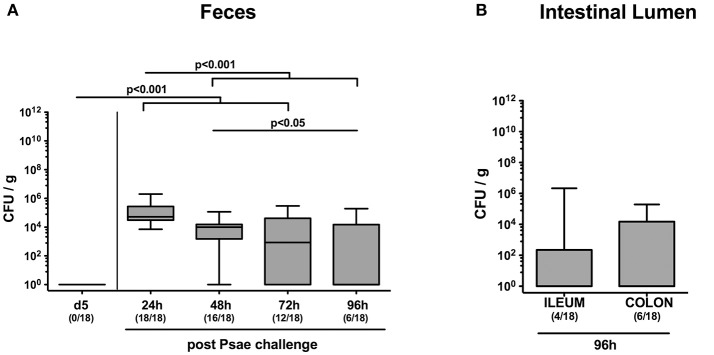Figure 1.
Intestinal MDR Pseudomoas aeruginosa loads following peroral challenge of mice with a human gut microbiota suffering from subacute ileitis. Secondary abiotic mice were generated by broad-spectrum antibiotic treatment and associated with a complex human gut microbiota by fecal microbiota transplantation. Ten days thereafter, subacute ileitis was induced by peroral infection of human microbiota associated mice with one cyst of T. gondii ME49 strain (day 0). On day 5 post ileitis induction (p.i.), mice were perorally challenged with MDR P. aeruginosa (Psae) and (A) the fecal Psae loads were followed up for further 96 h by culture. (B) In addition, Psae counts were assessed in the small as well as large intestinal lumen 96 h post Psae challenge. Box plots represent the 75th and 25th percentiles of the median (black bar inside the boxes). Total range and significance levels determined by one-way ANOVA test followed by Tukey post-correction test for multiple comparisons are shown. Numbers of mice harboring Psae in the respective intestinal compartment out of the total numbers of analyzed animals are given in parentheses. Data were pooled from four independent experiments.

